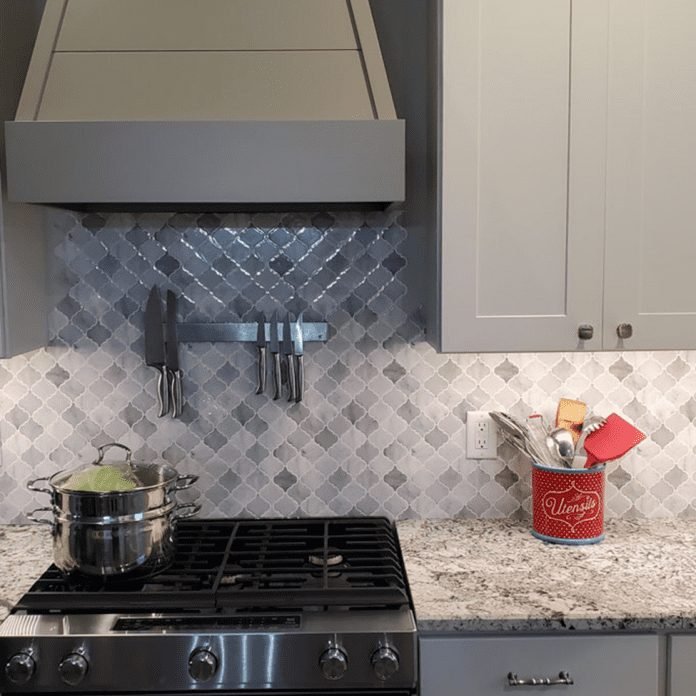Last Updated on February 8, 2025 by Bisma Sehar
Back splash tiles can be expensive, but luckily, there are affordable alternatives to save you money and add some style to your kitchen without breaking the bank. Backsplash peel and stick tiles come in a variety of patterns and colors that add a high-end look to your kitchen without the high-end price tag. Read on to learn more about how these peel and stick backsplash tiles work and how to find them at the best prices online.
Table of Contents
Backsplash Styles
Backsplashes can be a great way to give your kitchen or bathroom a facelift without painting or replacing the countertops. There are two different types of peel and stick backsplash tiles: composite tiles, which mimic traditional tiles while remaining light, easy to clean, waterproof, and dishwasher safe; or peel and stick vinyl tiles that can give your kitchen an industrial flair with its high gloss 3D appearance.
If you’re not sure what type of tile is best for you, consider where it will be located in your home. Composite tiles have been shown to withstand temperature changes much better than the vinyl so if you’re planning on installing backsplashes in any area where cooking is done – such as by your stovetop – this may be the better option.
Considerations When Choosing Peel and Stick Tile
Today’s homeowners can now enjoy the look of high-end tile without installing traditional ceramic tiles with peel and stick tiles. Peel and stick tiles are cheaper than traditional ceramic tile, are easier to install, and can provide an easy fix when installing backsplashes in your kitchen or bathroom. However, there are a few things you need to keep in mind before choosing a peel and stick tile for your project.
Different Types of Vinyl Tile
Backsplash peel and stick vinyl tiles can range from traditional to modern. There are also color, size, surface texture and design options to fit any room in your home. For example, you can purchase marble peel and stick tiles or granite peel & stick tile backsplashes. This option offers you the chance to get that high-end look without the hefty price tag.
How to Install PVC Vinyl Tile Over Concrete or Drywall
To install PVC vinyl tile over concrete or drywall, start by measuring your counter area. You want to be sure to measure along your baseboards as well in order to avoid cutting tiles too short.
Next, lay down a layer of adhesive spray on the backside of the tile that you’re applying to the wall or floor. Then place your tile into position, if necessary use spacers between individual pieces in order to make sure there is an even gap between them. To keep tiles from sticking prematurely, wait 24 hours before adding any grout or adhesives like sealant (if desired).
How to Clean PVC Vinyl Tile (with Pictures)
These days, PVC vinyl tile has replaced ceramic tile as the most popular flooring option. You can buy vinyl in almost any color or pattern you like, giving you all sorts of possibilities for installation in your kitchen or other room. Cleaning it should be easy too–until it’s not.
The problem is that, unlike ceramic tile, PVC vinyl tile can’t be submerged in water. This makes even hand washing more difficult because it becomes nearly impossible to get every surface without some amount of physical scrubbing involved. Hence the need to learn how to clean PVC vinyl tiles!
It turns out that there are several ways to do this–depending on what kind of mess needs cleaning up–and each has its own benefits and drawbacks.
Tips for Choosing Composite Tile
It’s not surprising that so many homeowners are getting the look of high-end backsplash tiles, with only peel and stick tile backsplashes. Composite tile backsplashes can be applied in a matter of minutes. They are glossy, waterproof, and nonporous making them easy to clean. On top of all this, they come in a range of colors, textures, sizes as well as price points.
Apart from this, if you are interested to know about How To Master In Selecting Perfect Kitchen Tiles then visit our Home Improvement category.
















